14 start with I start with I

The author of numerous bestselling novels, a masterful short story writer, and an outspoken social activist, Fannie Hurst was a major celebrity in the first half of the twentieth century. Daniel Itzkovitz’s introduction situates Imitation of Life in its literary, biographical, and cultural contexts, addressing such topics as the debates over the novel and films, the role of Hurst’s one-time secretary and great friend Zora Neale Hurston in the novel’s development, and the response to the novel by Hurst’s friend Langston Hughes, whose one-act satire, “Limitations of Life” (which reverses the races of Bea and Delilah), played to a raucous Harlem crowd in the late 1930s. This edition brings a classic of popular American literature back into print.
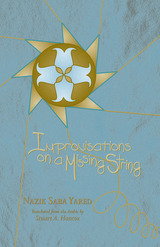
Nazik Saba Yared’s novel, Improvisations on a Missing String, tells the story of Saada Rayyis, who, after a mastectomy and prior to another operation which she may not survive, considers the course of her life with the purpose of understanding not only where she has been, but also where she is going.
In her attempt to cope with complex feelings of alienation and insecurity, she struggles against traditional expectations in order to secure a sense of belonging and fulfillment—but always on her own terms.
From her childhood in Palestine, through her university studies in Cairo, and finally as a teacher in Beirut, we follow the development of this independent woman as she comes to terms with her feelings about family, lovers, politics, art, and finally her own aspirations for belonging.
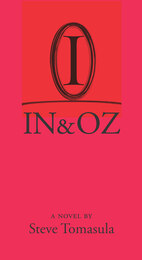
Steve Tomasula is a novelist like no other; his experiments in narrative and design have won him a loyal following. Exemplifying Tomasula’s style, IN & OZ is a heady, avant-garde book, rooted in convincing characters even as it simultaneously subverts the genre of novel and moves it forward.
IN & OZ is a novel of art, love, and auto mechanics. The story follows five different characters—an auto designer, photographer, musical composer, poet/sculptor, and mechanic—who live in two very different places: IN, a back-alley here and now; and OZ, which reflects the desire for somewhere better. The men and women who populate Tomasula’s landscape desperately hope to fill a void in their lives through a variety of media: music, language, dirt, light, and automobiles. As the plot moves forward, the story of the residents of INand that of their counterparts in OZconverge. A fanciful allegory that tackles class relations, art, commerce, and language, IN & OZ is a tale of the human condition that is as visually compelling as it is moving.
A novel not only for fiction lovers, but also for artists of all stripes, IN & OZ creates a fantasy that illumines our own world as it lucidly builds its own.
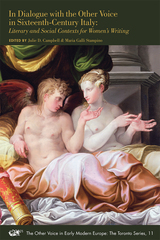
—Elissa Weaver
Professor of Italian, Emerita, University of Chicago
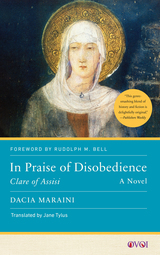

In the Shade of the Shady Tree is a collection of stories set in the Western Australian wheatbelt, a vast grain-growing area that ranges across the southwestern end of the immense Australian interior. Kinsella’s stories offer glimpses into the lives of the people who call this area home, as the reader journeys from just north of the town of Geraldton to the far eastern and southern shires of the region.
Cast against a backdrop of indigenous dispossession, settler migration, and the destructive impact of land-clearing and monocultural farming methods, the stories offer moments of connection with the inhabitants, ranging from the matter-of-fact to the bizarre and inexplicable. Something about the nature of the place wrestles with all human interactions and affects their outcomes. The land itself is a dominant character, with dust, gnarled scrubland, and the need for rain underpinning human endeavor. Inflected with both contemporary ideas of short fiction and the “everyman” tradition of Australian storytelling, this collection will introduce many readers to a new landscape and unforgettable characters.


The Wisconsin edition is for sale only in North America.
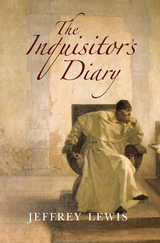
“We follow Alonso’s journey as he is dispatched by the Inquisitor General to the country’s northern frontier to root out ‘heresy, apostasy, backsliding.’ . . . This somber work seeks to uncover those subterranean impulses that surge beneath Alonso’s fate.”—Literary Review
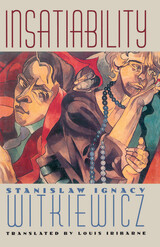


In this melancholy novel about a man on the brink of suicide, Stanley Crawford allows readers to question what it really means to be close to a person. Intimacy follows an unnamed narrator planning his own death. His preparations become a trigger and occasion for him to revisit key moments in his life and his material possessions, which are the solid artifacts from his life’s journey.
As sparrows in flight might form a single arrow, the life of the narrator comes into focus as a collage of fleeting events and images. Readers gain insights into tiny moments that slowly build into a picture of a man who seems to have very little, aside from material possessions, to lose.
The narrative pulls the reader along a trail of digressions—about running shoes, about the symbolism of rings—that lead down a proverbial rabbit hole until we realize the narrator’s intentions. Despite our lack of concrete knowledge about the narrator’s life, he allows us to share his thought processes: how every thought leads to the next, how memories seep upward when he picks up a particular T-shirt, or when he glimpses his car keys. And alongside our growing understanding of the narrator comes a recognition of our own thought processes: how we, like him, relate to our bodies; how we, too, cannot break away from the constant motion of our thoughts.
Intimacy is a brief, intense novel charged with the heightened sense of closeness that comes from watching a man’s last hours. It illuminates how brief snapshots of memory can trace the outline of an entire life.
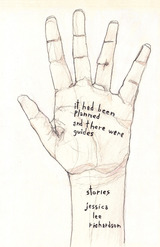
Jessica Lee Richardson’s debut collection It Had Been Planned and There Were Guides teems with double magic—families of spiders, monsters in triplicate, and panels of bleacher-sitting grandfathers (who live in a diaphragm!) cohabitate with a starker, more familiar kind of strange in a hyper real and living tapestry of teenage porn stars, lovelorn factory workers, and art world auctioneers. From a woman who awakes from a short kidnapping with an unquenchable need for risk to a concrete boat ride gone off the rails, from Los Angeles to the Bronx, from the Midwest to North Korea, these stories explore the absurd in real spaces and the real in absurd spaces, seeking a way into something else entirely.
Here, environments participate in agency, and voice compels movement forward, through, and in. Richly patterned language refuses singularity and the finger trap of the binary, seeking permeability in its reflection, a soft net to catch collective echoes. The collection begins and ends with stories that literalize descent and ascent, bookending the mirrored shape of the book’s arrangement as a vision of an inverted arc. The shape of story is literalized. We slide down from a mountaintop all the way to the inside of a womb and back, slipping on slopes unmarked by signs, catching stunning glimpses along the way. The journey along the track of desire might be frightening if it weren’t for all the water, if it weren’t for the bounce of the ride.

Nineteenth-century French writer Marie-Henri Beyle, better known by his pen name Stendhal, is one of the earliest leading practitioners of realism, his stories filled with sharp analyses of his characters’ psychology. This translation of Stendhal’s Chroniques italiennes is a collection of nine tales written between 1829 and 1840, many of which were published only after his death. Together these collected tales reveal a great novelist working with highly dramatic subject matter to forge a vision of life lived at its most intense.
The setting for these tales is a romanticized Italy, a place Stendhal viewed as unpolluted by bourgeois inhibitions and conformism. From the hothouse atmosphere of aristocratic convents to the horrors of the Cenci family, the tales in Italian Chronicles all feature passionate, transgressive characters engaged in “la chasse au bonheur”—the quest for happiness. Most of the tragic, violent tales are based on historical events, with Stendhal using history to validate his characters’ extreme behaviors as they battle literal and figurative oppression and try to break through to freedom.
Complete with revenge, bloody daggers, poisonings, and thick-walled nunneries, this new translation of Italian Chronicles includes four never-before-translated stories and a fascinating introduction detailing the origins of the book. It is sure to gratify established Stendhal fans as well as readers new to the writer.
READERS
Browse our collection.
PUBLISHERS
See BiblioVault's publisher services.
STUDENT SERVICES
Files for college accessibility offices.
UChicago Accessibility Resources
home | accessibility | search | about | contact us
BiblioVault ® 2001 - 2024
The University of Chicago Press









